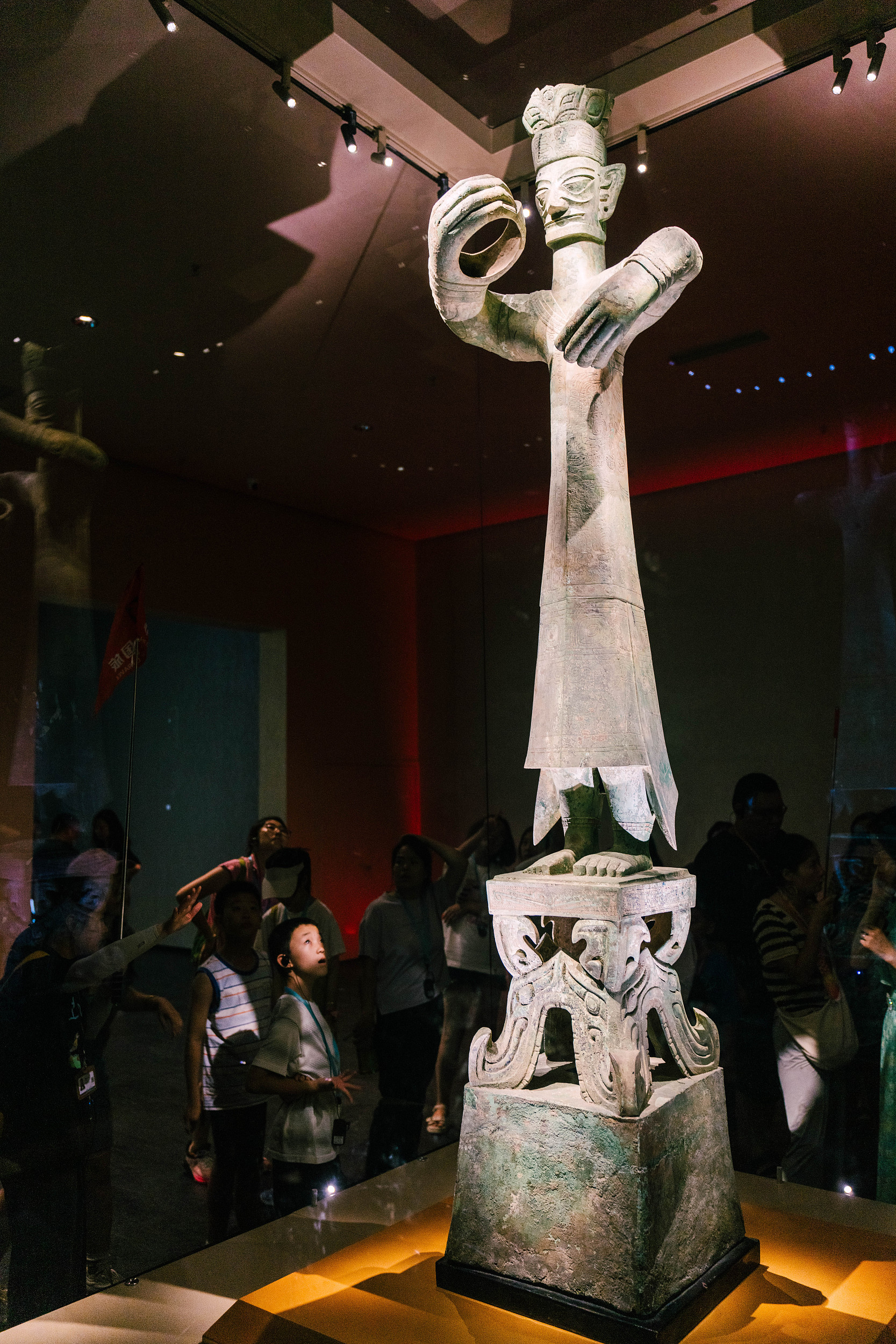
The grand bronze statue of a human figure at the new Sanxingdui Museum. (PHOTO: VCG)
By?ZONG?Shihan
The grand statue of a human figure in bronze, on display at the new Sanxingdui Museum in Sichuan province, southwest China, is the tallest and most complete standing bronze figure in existence. It is nearly 261 centimeters tall and weighs 180 kilograms.
Known as the king of bronze statues in the world, it has a history of more than 3,000 years and was unearthed at a sacrificial pit at the Sanxingdui archaeological site in 1986.
The statue consists of a figure and a square base. The figure wears a high crown and three layers of tight-sleeved clothes, with an exquisite dragon and bird pattern. The hands are held in front of the chest in an embrace-like posture. The figure also wears anklets and stands barefoot.
The awe-inspiring statue demonstrates the maturity of ancient China's bronze casting technology. Lead and tin added to bronze made the alloy more ductile and easier to cast into ornate vessels in that era. Other civilizations during the same period still used red copper, which could not be cast into complex patterns or hollow objects.
There are two theories about the identity of the mysterious statue. Some regard it as the statue of a high priest who commanded sacrificial activities while some think it is the statue of a king, the supreme ruler. It is certain that the statue was a sacrificial artifact used for blessing.
It is difficult to determine what the figure held in his hands. It could have been a scepter, or an item of ivory, or even a jade cong, a tube-like object. Experts have not yet reached a conclusion and it could remain a mystery forever.
The trio will conduct a series of experiments in fields such as life science, fluid physics, combustion science and materials science. Notably, this is the first time that fruit flies have been taken on a Chinese space mission as experimental subjects. What made scientists choose fruit flies? What experiment will they undergo?
